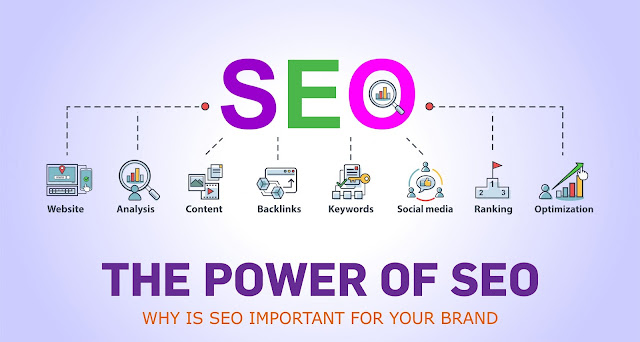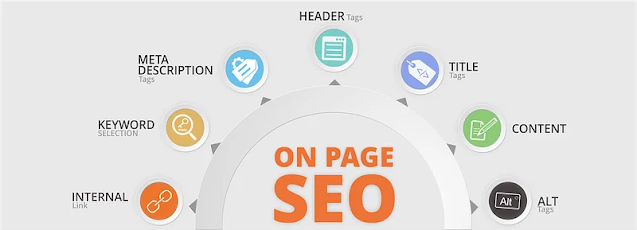History and Evolution of SEO
Taking inspiration from History Stephen Hawking's famous book title "A Brief History of Time" which unraveled the science behind how the universe functions, this blog intends to unravel how SEO has evolved over the last 3 decade.
What is SEO?
Search engine is set of programs to help the people to identify the information they were looking in the online using keywords or Phrases. Search Engine Optimization, commonly referred to as SEO, is a stream of Digital Marketing that involves strategies, process and techniques to improve a Websites's better ranked from the perspective of search engines.
SEO helps answer the Questions, “What should I do to make my Website be listed on the first page of a Search result?". The reminder of the blog will emphasize much on the fact of how volatile and rapidly changing the idea and concept of SEO has been over the years. It is critical for the SEO Practitioners to be well aware of the Industry and keep up with the trends.
How it all began?
The revolution of the Internet as we all know necessitated the need for a Search Engine. Google was the pioneer that established the way how Search Engines are efficiently used and consumed. Google history begins in 1995 at Stanford university. Larry page and Sergy brain were work together they built a search engine that used links to determine the importance of individual pages. This engine called as BACKRUB. After that they renamed as Google. The google.com officially registered on 15th September 1997. The practice of SEO we have now actually predates the most popular search engine Google. Google had a very simple approach to how websites were listed as part of the WebCrawlers and Search Engines – E mail support. Any page listing to be done will be captured as a request, will be responded to by Google within a stipulated SLA time of 24 hours via mail. As the content and information listed on World Wide Web started to explode in late 90’s and early 2000’s, this became unviable and unsustainable.
Pivotal Moment – The Beginning
On September 11, 2001 the fateful twin tower attack impacted many lives and it also changed the way Google and its search engine operated. The incident created panic and curiosity across the world prompting thousands of them to search for the information related to the ‘Twin Tower Attack’. But they were not able to access the content that they were looking for as the most of the information needed for was non-existent in Google’s repository of Page Rank. This made Google realize the need for having as many pages listed as possible and ranked for relevancy. As a result, the biggest change was the introduction of a Web Master that will allow the website owners to manage the content published with a list of Keywords relevant to the Website. These keywords will help Google’s search algorithm to rank the pages accordingly based on content relevancy. To aid the Website managers better, Google also released a book for Search Engine Optimization as a guide.
Phase of Transformation and Stabilization
The aspect of allowing the Website Managers to control the ability to rank Web sites had its own inherent problems wherein the Website Managers learnt the tricks of the trade and began to manipulate the keyword search to be able to rank their websites high. This resulted in search results returning pages that are not at all relevant. Imagine searching for a restaurant with Chinese cuisine and the search letter returning the history of China. Google realized a big folly in the above approach wherein ensuring the quality of information or content retrieved rested on the Website owner and manager.
They navigated to a Link Specific approach which made websites whose links are referred by other websites to rank higher than others. Here, the critical logic was that only important websites will be referenced by other websites and this worked well for a while. But the Website managers found a way through this as well by using paid proxies to create dummy/fake web sites that will reference their website and this made the websites to be ranked higher. Google overcame this challenge by giving a weighted value for references done by other websites. By this logic, websites that are referenced by other websites that are already highly ranked are weighted higher. So, a referenced link given by a reputed website was considered as an indication of quality content. But even this became problematic as even some reputed websites succumbed to the monetary gain strategy mentioned earlier. Google then introduced a concept called as Link Juicing (Passing the juice) wherein if any website refer another website, then the term was known as passing the juice. In essence, Juice of a website is used to rank it. If a website refer another website, then it passes on its juice to linked website. The hope here was that no website will compromise its own ranking to benefit another website. Similarly, a website can choose to reference a link without loosing juice by using the rel=Nofollow in <a href>
Advent of Social Media and Modern SEO
In the year 2008, Google launched the feature of Personal assist in its search engine which helped users with suggestive search keywords based on personalization elements. The following year Google changed a logic that ranked websites. It introduced the time spent on websites as a key input for ranking. For websites with higher bounce rates (Visitors not spending more time in my website), their ranks would be significantly lower. Due to the aspect of Pogo Sticking (when a user jumps in and out of websites immediately from a search result page), Google values the click back and forth action not very high to valuate the ranking. With the advent of Social Media, Google started leveraging social media content as a cross reference to rank websites. Let’s say, a website is engaged well and referenced well through social media, Google ranked it better. Although this approach lost steam as everyone started using social media to boost their ranking. To overcome this, the people who visit these websites from social media and their credibility is also marked as an indicator to identify what content
Google Ad Concepts
On October 23, 2000 Google launched Adwords, an online platform to advertise for brands. The advertisers were empowered to display ads in the form of visual images or videos. This created avenues to promote, engage and market their brands. In 2018, Adwords was rebranded to Ads. If Adwords was for people to advertise, Google launched Adsense in 2003 for people who wish to monetize their website. For example, if a Company ‘A’ has a website for writing about fashion and has a significant following, it can register for Adsense wherein Google will place ads in the company’s website. Based on the views and clicks made on such ads, Google pays the company. This form of monetization can be Pay per view (monetized for every ad view done in the website) or Pay per click (monetized for every ad click done in the website).



Comments
Post a Comment